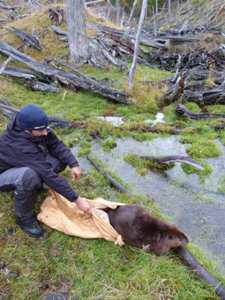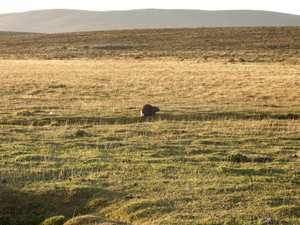Alejandro Pietrek
Other projects
28 Mar 2012
Building Realistic Models to Predict the Spread of Invasive Beavers in Patagonia
In the long run, we expect our project will provide the scientific basis to slow the spread of the beaver in Tierra del Fuego and to avoid the colonization of suitable areas by this species in mainland Argentina and Chile.

Releasing a radiotagged adult in the forest of Tierra del Fuego.
The Island of Tierra del Fuego, in southern Argentina and Chile, harbours some of the most pristine sub-Antarctic ecosystems in the world. Extensive old growth forests near the Andes, peat bogs, meadows, glaciers and a vast hydrographical network create a unique landscape for wildlife. One of the major threats to this biodiversity is the introduction of invasive species, most notably the North American Beaver (Castor canadensis).

A beaver in the windy and treeless patagonian steppe.
Beaver are responsible for the most drastic landscape alteration in Tierra del Fuego since the last glacial age, affecting not only the hydrology and composition of the southern beech forest, but more importantly allowing other exotic species to invade the ecosystem. The species had arrived on the mainland of Chile by 1990, raising concerns about a further expansion throughout Patagonia.
This highlights the need for better computer-based forecasting models to predict the spread of the invasion and to guide managers seeking to slow the northward expansion of the species. Most invasion models that have been produced up to now have ignored habitat heterogeneity which presumably plays an important role in heterogeneous landscapes such as Tierra del Fuego.
In this study we propose to combine Geographical Information Systems (GIS) tools, field data using radiotelemetry, and novel computational modelling approaches to extrapolate habitat-specific population and dispersal parameters into rates of invasion in different habitats. Our main objective is to build an invasion model that includes habitat heterogeneity to more accurately forecast the invasion of beaver in Patagonia and ultimately, prevent its further spread in Argentina and Chile.